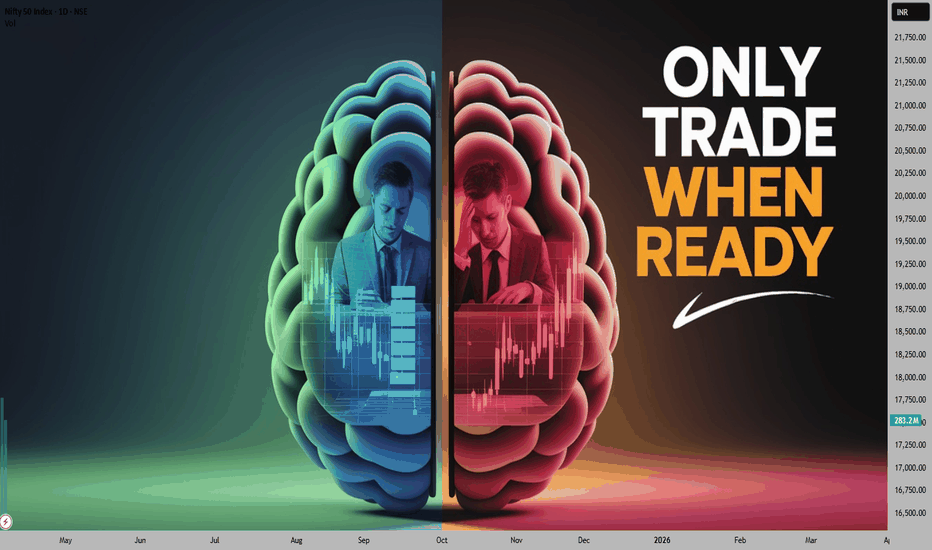The Psychology Behind Holding Option Trades to the Targets!Hello Traders!
Entering a trade is easy, but holding it with conviction till the target hits — that’s where 90% of traders fail. Most of the time, we exit early out of fear, impatience, or seeing quick profits vanish. Today, let’s understand the psychology behind holding option trades and how to set yourself up for patience and discipline .
Why We Exit Too Early?
Fear of Losing Unrealized Profits: The moment your trade shows green, the mind screams “book now!” even when the setup is still valid.
Overtrading Mentality: You want to book fast and re-enter again, leading to emotional and scattered trades.
Lack of a Clear Plan: If you don’t have a defined target, SL, and reason to hold , you’ll exit at the first sign of volatility.
How to Develop the Patience to Hold Trades
Visualize Your Trade Before Entering: Ask yourself — “What will I do if price pulls back after entry?” Plan your SL, target, and trailing logic beforehand.
Use Alert Zones, Not Constant Monitoring: Watching every tick increases anxiety. Instead, set alerts at key levels and focus on the logic, not emotions.
Risk What You’re Comfortable With: If your position size is too big, you’ll panic during small reversals. Right sizing = calm holding.
Follow Structure Over Emotion: Hold as long as price is above VWAP/Trendline/Support (for longs). Only exit if structure breaks.
Rahul’s Tip
“The market rewards patience more than perfection.” If your analysis was right, trust it. Let the trade breathe. Stop treating every green candle as your exit point.
Conclusion
The biggest wins in options trading come when you hold with discipline . Build a setup where your entry has logic, your exit has structure, and your mind stays calm in between. That’s how you train yourself for consistency — not by chasing, but by mastering patience .
How long do you usually hold your option trades? Let’s talk about it in the comments below!
Psychologysetup
The Psychology Setup: Trade Only When These 2 Conditions Are MetHello Traders!
Most traders obsess over strategy, indicators, and chart patterns — but the real edge often lies in psychological discipline . Want to take high-probability trades and avoid emotional traps? Then here’s a simple rule: Only trade when these 2 psychological conditions are met.
Let’s explore the setup that separates impulsive traders from consistent ones.
Condition 1: You’re Emotionally Neutral
No Fear of Missing Out (FOMO):
Don’t enter just because “the market is moving.” If your emotions are rushing, it’s a trap.
No Revenge Trading:
If you’re reacting to a loss, step back. Emotional decisions lead to impulsive trades, not logical setups.
Clear Mindset:
If you’re tired, angry, or distracted — don’t trade. Your mind is your main weapon in the markets.
Condition 2: You Have a Clear Trade Plan
Setup Must Match Your Strategy:
Only enter if the setup matches your pre-defined plan. No “gut feeling” entries allowed.
Defined Entry, SL, and Target:
If you don’t know your stop loss before entering — it’s not a trade, it’s a gamble.
Risk is Calculated:
Trade size must be aligned with your capital and risk management rules — no oversized positions.
Rahul’s Tip
Most losing trades don’t fail because of strategy — they fail because of mindset. Protect your psychology and let the setup come to you. Don’t chase it.
Conclusion
Discipline is a setup. Trade only when you're mentally calm and technically aligned. These two conditions act like a filter — they save you from bad trades and help you focus only on the high-quality ones.
What’s your rule before entering a trade? Do you check your mental state first? Let’s talk below!

